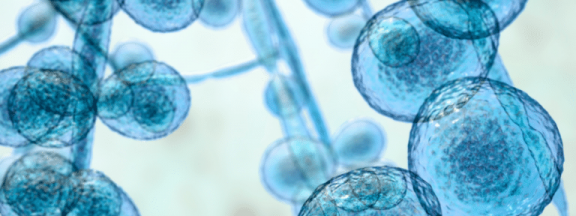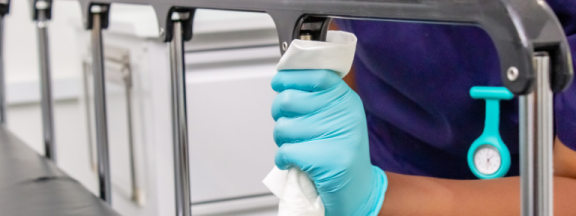
When selecting a disinfectant for healthcare or industrial settings, it’s crucial to understand the strengths and weaknesses of each option. Below is a comparison of disinfectants to help you make an informed choice.
70% Alcohol
A popular disinfectant known for its quick-drying properties and effectiveness against many pathogens. However, it has limitations in pathogen coverage and requires careful handling due to its flammable nature.
❌ Poor Efficacy
While effective against many bacteria and enveloped viruses, 70% Alcohol does not eliminate mycobacteria, fungi, or spores. Additionally, its effectiveness is limited against certain non-enveloped viruses.
❌ Require Pre-Cleaning
Alcohol requires thorough pre-cleaning to be effective therefore poor compliance can significantly reduce its disinfecting power.
❌ Flammability
Alcohol-based disinfectants are highly flammable, which poses risks in environments without adequate ventilation.
❌ Evaporation
Although effective, alcohol-based disinfectants typically dry in under 2 minutes. The rapid evaporation necessitates frequent reapplications to ensure efficacy.
❌ Damage to Devices
Prolonged use of alcohol can cause surfaces to dry out, potentially leading to cracks that harbor microorganisms and promote biofilm development.
Quaternary Ammonium Compounds (QACs)
Versatile disinfectants used in various settings, offering broad utility but have specific limitations in pathogen effectiveness and can leave residues that impact both surfaces and health.
❌ Lack of Efficacy
Not effective against mycobacteria, spores, or certain fungi and viruses. Their effectiveness can be compromised by poor pre-cleaning.
❌ Long Contact Time
Require contact times between 3 to 10 minutes, and can be challenging maintaining a wet surface for the required duration, necessitating frequent reapplication.
❌ Damage to Devices
Can leave behind toxic residues and may cause material cracking over time.
❌ Health Impacts
Residual QACs can irritate the skin and lungs and are toxic to aquatic life. They also contribute to antimicrobial resistance, which poses long-term risks to infection control.
🌟Chlorine Dioxide (ClO₂)🌟
Tristel’s trusted chemistry for 30 years. It has been tested and approved for use on over 2000 medical devices and many more surfaces globally. ClO₂ is a powerful oxidizer, it reacts with microorganisms by taking electrons, damaging the cell wall and ultimately destroying the microorganisms. This mode of action means microorganisms cannot build resistance to ClO₂.
✅ Broad-Spectrum Efficacy
Highly effective against a wide range of pathogens, including bacteria, viruses (both enveloped and non-enveloped), mycobacteria, fungi, and spores. Making it a versatile disinfectant suitable for various applications.
✅ Non-Flammable
Reducing the risk associated with its use and making it safer for application in various environments.
✅ Contact Time
Offers effective disinfection with shorter contact times compared to many other disinfectants. Reducing the need for frequent reapplications and ensures effective microbial control.
✅ Material Compatibility
Less likely to cause damage or cracking to surfaces compared to alcohol and QACs. It is gentle on equipment and surfaces, preventing long-term damage and maintenance issues.
✅ No antimicrobial resistance
Prevents antimicrobial resistance by disrupting essential cell functions in pathogens, making it nearly impossible for them to develop resistance, ensuring continued effectiveness in infection prevention.
Conclusion
When selecting a disinfectant, chlorine dioxide is an effective and reliable choice. It offers broad-spectrum efficacy, short contact time and prevents antimicrobial resistance. Unlike alcohol and QACs, chlorine dioxide ensures comprehensive and lasting infection control in healthcare and industrial settings.
For more information on chlorine dioxide and Tristel, click here.


